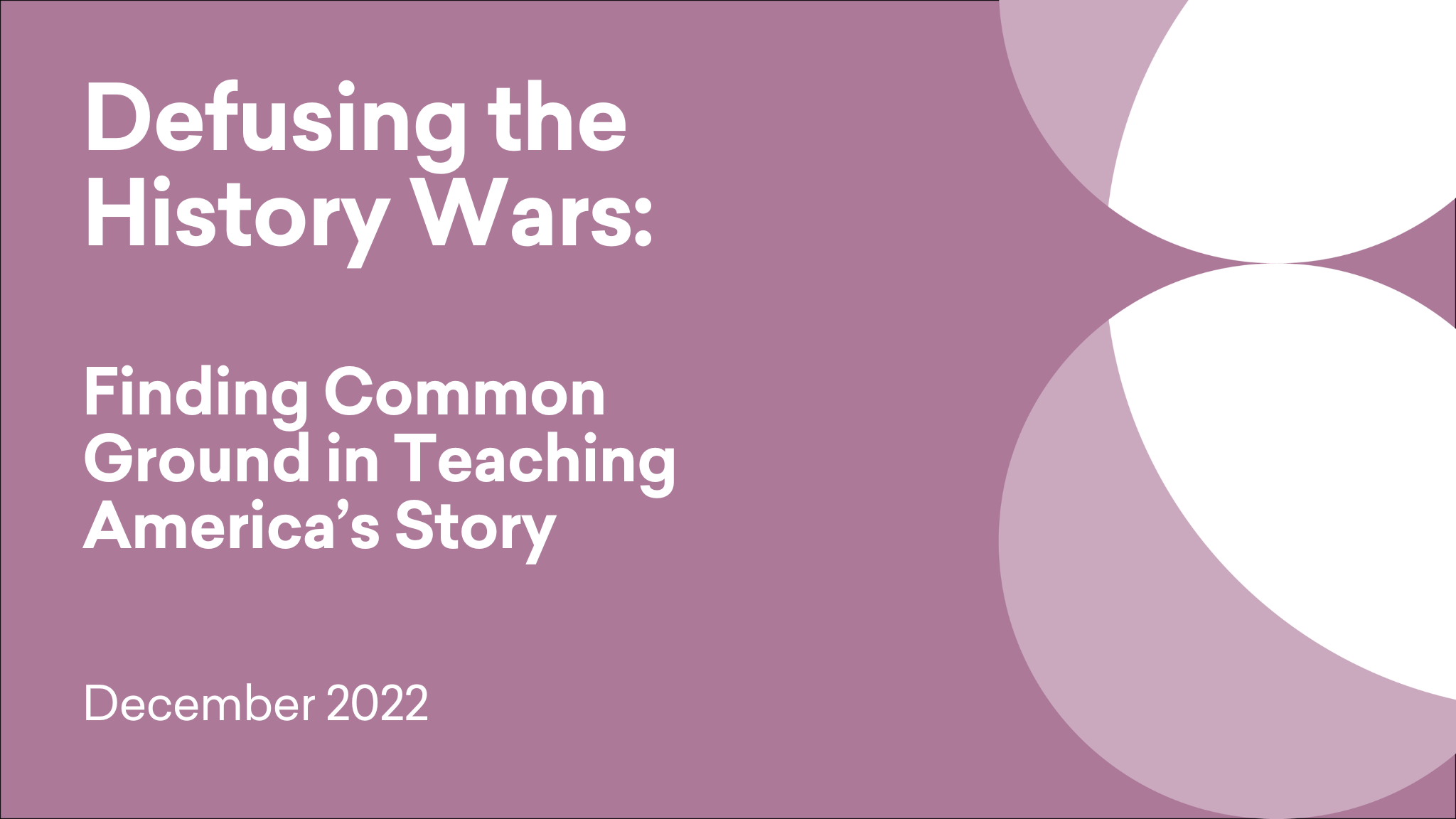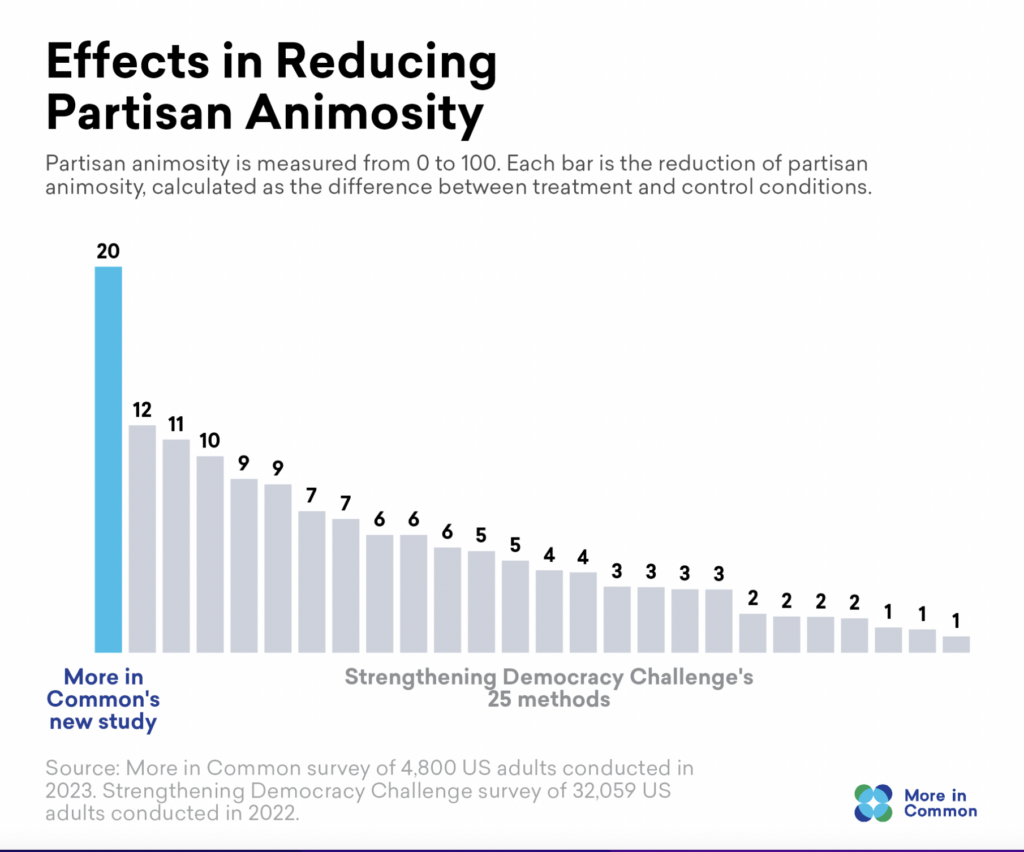
07 December 2022
May 1, 2023
Narrative & Communications
Trust
Perception Gaps
A new method developed by More in Common significantly reduced feelings of hostility between political party members to a level that resembles the political climate of the 1980s, when Republicans and Democrats held close-to-neutral feelings towards one another.
February 2023 Survey
Polling Firm: YouGov
Sample Size: n=4,800 US Adults (nationally representative)
Fieldwork Dates: January 30 – February 10, 2023
Margin of Error: +/- 1.4 for US avg.
February 2023 Recontact Survey
Polling Firm: YouGov
Sample Size: n=3,600 US Adults (nationally representative)
Fieldwork Dates: February 15-27, 2023
Margin of Error: +/- 1.6 for US avg.
Feelings of hostility between political parties, known to researchers as “partisan animosity,” have been steadily increasing in the US since the 1980s. Partisan animosity is captured through measuring negative feelings Americans have towards a political outgroup (opposite political party) on a 100 point scale. As partisan animosity increases, general social distrust increases as well. Individuals start to physically and socially distance themselves from people who belong to a different political party. Personally: relationships fall apart. Nationally: the country’s trust in democracy is significantly threatened.
The hypothesis of this project draws on the concept of “perception gaps”, misunderstandings or exaggerations about how other people think. For example, in our Defusing the History Wars report, we found that Republicans think only 43% of Democrats agree with the statement “students should not be made to feel guilty or personally responsible for the failures of prior generations,” when, in fact, 83% of Democrats agree.
But our prior research also discovered that presenting perception gap data alone (such as the statistics above) was not enough to convince audiences that the average member of the opposing party is not as threatening or extreme as they think.
To address these challenges, we used our Defusing the History Wars report insights to produce video content. The videos aimed to increase the credibility of perception gap statistics by incorporating two key elements: (1) leveraging personal stories and (2) using members of the viewer’s own political party as messengers.

We then tested the ability of the videos to decrease feelings of hostility between Democrats and Republicans. The combination of the two key elements had a powerful effect:
The videos significantly lowered feelings of partisan animosity by 20 points on a 100-point scale. As shown below, the method was almost twice as effective as the top performing approaches that were a part of Stanford University’s Strengthening Democracy Challenge, an initiative that tested 25+ methods developed and submitted by academics and practitioners that aimed to reduce partisan animosity.
While we found the durability of the effects were brief, their magnitude suggests that adopting new methods and strategies in sharing information has potential to defuse tensions, increase trust in data, and improve our understanding of one another.
Explore the depth of our research at your fingertips. Get the complete insights by downloading the full report today.
What unites and divides Americans today? This newsletter takes a closer look at issues pressing on America’s social and political fabric and provides recommendations for how to strengthen ties to keep us bound together.